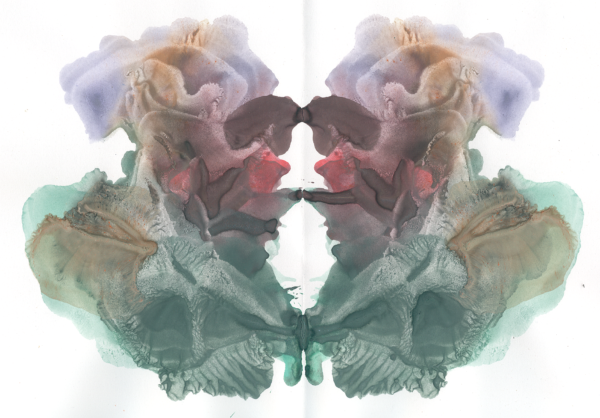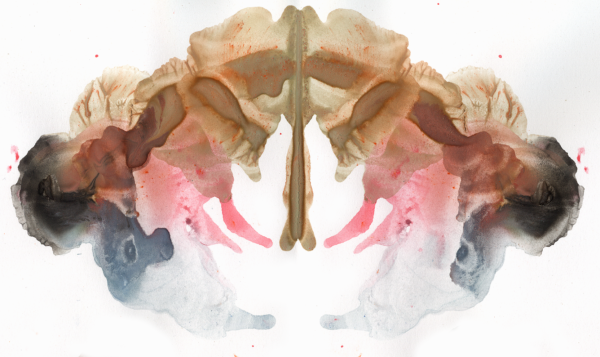For years, cognitive behaviorism has been the self-proclaimed leader in psychotherapy, citing numerous studies to back that claim. That approach has touted its superior effectiveness in treating a variety of mental disorders. Its list of “evidence-based” applications has grown so broad that you’d think it’d cure all that ails you. Like other movements, it has tended to overreach its utility by trying to be all things to all people. In the words of a folksy adage, “When your only tool is a hammer, everything starts looking like a nail.”
Putting Cognitive Behaviorism in Perspective
We can gain perspective, though, by placing cognitive behaviorism in its historical and cultural context. In doing so, we can better appreciate both its promises and its limitations in resolving particular problems of living. This exploration will allow cognitive behaviorism to assume its rightful place among other approaches to life’s adversities. We can then see this therapeutic model as but one set of tools in the tool chest. This perspective will then allow us to apply its strategies and techniques to the appropriate situations. Likewise, we can expect to find that other therapeutic approaches are more relevant for other circumstances.
The Broader Historical Context
Cognitive behaviorism is, first of all, a product of Western civilization. As such, it inherited a perspective that evolved out of the Renaissance and the later Industrial Revolution. This orientation ushered in a philosophical inquiry into how we know anything with any certainty. This laid the groundwork for logical empiricism as the basis of the scientific method. That particular ideology viewed the application of logic to observable data as the basic path to knowledge. Within psychology, the school of behaviorism embraced that philosophy to guide its research and practice. This is a rather abbreviated outline of a centuries-long process, and the following sections will flesh this out.
The Rise of the Scientific Perspective
With the Renaissance and the later Industrial Revolution, Western culture shifted from a faith-based to a science-based view of reality. In doing so, our civilization has exhibited a bias toward the scientific objectivity that has fostered unprecedented advances in science and technology over the past 500 years. This perspective questioned the assumptions of the older world view, including the belief in an omniscient and omnipotent Being running the show. It even called into question the reality of our own existence. In the 17th Century, Rene Descartes proposed a logical proof of our existence, declaring, “cogito, ergo sum.” (“I think, therefore I am”). Later philosophical thought gave primacy to the objective perspective by viewing rationality as the arbiter of factual certainty.
Toward Logical Empiricism
Philosophical inquiry became focused on understanding the path to knowledge (i.e., epistemology, as it is known in philosophy). Thus, it is more of a philosophy of science, rather than a broader philosophy of life. Within this movement arose branches of rationalism, empiricism, and skepticism, all embracing objective perspectives on reality. Logical empiricism took this outlook on knowing to its natural conclusion. This school views knowledge as being accrued through applying principles of logic to shared sensory experience. Thus, private personal experiences are not to be trusted, as they cannot be validated by others. Well, so much for introspection! And metaphysical constructs? Logical empiricists considered these non-sensory (and perhaps nonsense?), and thus unworthy subjects for philosophical or scientific analysis.
The Emergence of Psychology as a Scientific Discipline
During the Industrial Age, psychology emerged from its philosophical roots to proclaim its legitimacy as a scientific pursuit. In 1879, Wilhelm Wundt established the first psychological laboratory, in Leipzig, Germany. He and his followers pursued the methodical study of human experience, including sensations, thoughts, feelings, and memories. Subsequent psychological research further developed an experimental approach to the pursuit of knowledge. This trend culminated with the American Psychological Association adopted the Scientist-Practitioner model in 1949. They thus formalized science as the basis of applied psychologists’ practice. This meant that scientific research was to provide the foundation for clinical psychologists providing psychotherapy and psychological assessment.
Experimental Research vs. Case Study
Thus, the methodology of experimental psychology came to overshadow the more subjective case study approach. In the process, the objectively-oriented psychologists viewed the insights attained from case studies as mere anecdotal evidence. At best, psychologists viewed these as a source of hypotheses to be tested in more formal experiments. In this way, objective data replaced clinical intuitions as the gold standard for psychological knowledge. Psychotherapy came to be viewed as an application of scientific knowledge, rather than a healing art. Psychologists devised controlled experimental designs to establish that a particular therapeutic approach meets the “evidence-based” standard for efficacy. This emphasis on objectivity has largely relegated the more subjective exploration of the complexities of the human condition to the arts and humanities.
The Rise of Behaviorism in Psychology
From within the broad discipline of psychology emerged the school of behaviorism, with its more stringent research standards. This branch found guidance through its strict adherence to the tenets of the logical empiricism. In particular, it viewed knowledge as accruing through applying principles of logic to shared sensory experience. According to this standard, the earlier introspective methods of Wundt and Tichener were dismissed as objectively unverifiable. That is, the researchers could record, but not validate, their subjects’ report of private experiences. (This is by definition, because if it could be verified, the experience would no longer be considered private).
The Black Box of Private Experience
The strict behaviorists proclaimed that data without external validation was neither reliable nor meaningful. They considered the mind as a “black box,” concealing its contents and providing no real explanations. The behaviorists considered only the subjects’ observable behaviors legitimate targets for investigation. This methodology excluded private experience (i.e., thoughts, feelings, sensations, memories, and associations) from study. Within this constraint, behavioral psychology adopted a cause-and-effect analysis of the relationship between the environment and the behavior. In learning theory, behaviorists view behaviors as conditioned responses to external stimulus situations and reinforcement histories. Note how all these factors can be witnessed directly and consensually validated.
Enter the Cognitive Behaviorists
The cognitive behaviorists, though, reintroduced one type of private experience, cognitions, as a legitimate object of inquiry. They challenged the behaviorists’ suspicions about the validity of private experience by assuming that their subjects were reporting the truth. The “truth,” though, had one major qualification. That is, cognitive behaviorists assumed the subjects’ were reporting their own truths. These were descriptions of their own private thoughts and beliefs, even if not objectively true. Thus, cognitive behaviorists could count their subjects’ self-report of experiences as publicly verifiable, even if their experiences weren’t.
Irrational Personal Truths
In fact, the cognitive behaviorist based their therapy on the discrepancy between their clients’ personal truths and objective reality. With public consensus defining this reality, beliefs contrary to this shared reality were considered irrational. Therapists adopting this approach proposed that their clients’ irrational beliefs were causing them emotional distress. Thus, cognitive behaviorists opened up the “black box” of the mind to rediscover the inner life that had been ignored or rejected as irrelevant. In doing so, they fudged on the strict empiricism of the radical behaviorists and the earlier logical empiricists. They still retained an objective bias by focusing on the issue of rationality in their clients’ beliefs, rather than paying comparable attention to the more subjective memories, emotions, sensations, or perceptions.
Objectivity over Subjectivity
Even with its acceptance of private experiences as a legitimate object of study, cognitive behaviorism remained true to logical empiricism’s vision of knowledge. That is, it viewed knowledge as being attained through applying logic to shared sensory experience. In assuming this approach, cognitive behavioral therapy (CBT) was extending the challenge that the Age of Reason had posed to the Age of Faith from the broad cultural level down to the individual level. In this case, rather than challenging the dogmas of religion, as Copernicus and Galileo had done in displacing the earth from the center of the universe, cognitive behaviorists were analyzing and challenging the idiosyncratic belief systems of the various individuals seeking their aid and counsel.
Humans Viewed as “Naive Scientists”
An early pioneer in cognitive behaviorism, George Kelly, presented a view of individuals as “naive scientists” who develop and test the validity of their belief systems about their world. This tenet served as a foundation for the cognitive behavioral therapies later developed by Aaron Beck, Albert Ellis, and others. Counselors and therapists using this approach judged the validity of their clients’ beliefs by the same standards of logical empiricism that they used in their own scientific research.
Cognitive Behaviorism and Freudian Psychoanalysis
A contextual review of cognitive behaviorism would be incomplete without reference to Freudian psychoanalysis. This earlier model of psychotherapy had upset Victorian sensibilities by addressing human sexuality as central to the human condition. Behaviorism did not challenge Freudian theory for its emphasis on sexuality per se. Rather, it challenged its use of various metaphysical constructs (e.g., libido, the Oedipus complex, the death instinct, the unconscious). Behaviorists argued that these concepts were so removed from sensory experience that they could be neither proven nor refuted. Thus, behaviorism did not actually disprove Freudian psychodynamics. Rather. it moved to dismiss the case on procedural grounds. Namely, behaviorists argued that the intangible Freudian concepts lacked the observability required by logical empiricism. In this way, cognitive behaviorism was able to dismiss the animal nature in humans without “getting its hands dirty.”
The Problem of Emotional Distress
That still left the realm of the emotions to address. since clients were seeking therapy, not to correct their irrational beliefs, but rather to alleviate their emotional pain and suffering. While the Freudian psychodynamic model views distressing emotions as a manifestation of frustrated instinctual drives, cognitive behaviorism considers these feelings more as byproducts of irrational belief systems.
Beyond Cognitive Behaviorism
Behaviorism has since evolved beyond the pure cognitive behavioral model in what has been characterized as the “third wave” of behaviorism. These newer approaches have delved further into the “black box” of the mind. Marsha Linehan’s dialectical behavioral therapy (DBT), Stephen Hayes’ Acceptance and Commitment Therapy (ACT), and Mindfulness-based Cognitive Therapy (MBCT) have all expanded their scope beyond the narrow focus on thoughts through the analytic lens of rationality.
An Eastern Influence
These behavioral schools have drawn upon Eastern influences in developing the practice of mindfulness as cornerstones of their approaches. DBT and ACT have also deviated from behaviorism’s logical empirical foundations by addressing values and emotions. For example, they have espoused a paradoxical juxtaposition of acceptance of the current situation and commitment to change. Both of these approaches seek to cultivate a tolerance for normal suffering by incorporating the Buddhist principles of the Four Noble Truths into their perspective and practice. This contrasts with CBT’s reliance upon logical analysis to temper, if not eliminate, the negative emotions associated with the irrational beliefs.
Venturing into Subjectivity
With ACT, the challenges to the clients’ dysfunctional outlooks on life are conveyed not just through the objective lens of logic, but also through the subjectivity of analogy and metaphor. With such significant departures from the philosophical underpinnings of behaviorism, this “third wave” of behaviorism actually appears to be more of a hybrid of behavioral and experiential approaches to psychology, rather than simply an evolved behaviorism.
The Further Modification of Behaviorism
Even with these deviations from behavioral orthodoxy, the cognitive behavioral establishment has not declared these “third wave” approaches heretical. Rather, traditional cognitive behaviorists have tolerated the reformed schools and even introduced mindfulness techniques into their own practice. Traditional CBT has tended to import the techniques without incorporating the underlying principles that have supported these practices through the centuries. Such modifications strike me as akin to morphing an elephant’s trunk onto a horse: there just doesn’t appear to be a smooth integration.
An Alternative Perspective: The Way of Paradox
Now, where am I going with this review? What’s my angle? You might note my domain name is roguepsychologist, and wonder what I am up to. And you would be quite right! By placing a school of thought within a cultural context, we recognize its relativity. It takes its place among various perspectives. We can then compare the perspectives, thus revealing their limitations as well as their strengths. Such is my strategy in challenging the position of cognitive behaviorism as the prevailing model of psychotherapy.
When Life’s Paradoxes Cause Distress
While CBT provides a valid approach to alleviating distress resulting from unrealistic expectations and other irrational beliefs, this approach does not appear relevant for reconciling oneself to the inherent paradoxes of the human condition. And I would not be exerting such energy in my challenge if I did not have an alternative perspective to set forth. And in doing so, I would pose the following questions: What if the structure of our reality were not logical and rational? What if it were paradoxical, instead? And if so, how might we engage in its structure, not in the most reasonable way, but in the most enriching manner?
Beyond the Familiar Ground of Cognitive Behaviorism
I grant that the “third wave” of behaviorism has blazed a trail into this frontier (from the behavioral perspective, that is), leaving behind the familiar path of logical empiricism. Yet while this is foreign territory to the behaviorists, it is homeland for others who are steeped in experiential and humanistic traditions, particularly existentialism. I must also acknowledge that I have been relatively unfamiliar with the intricacies of these “third wave” schools, such that I was going about reinventing the wheel according to my specifications, with their ideas perhaps having some influence in the background.
Approaching Paradox from an Experiential Perspective
The “third wave” of behaviorism has thus approached the integration of behavior and experience from a behavioral perspective. In contrast, I have ventured out from a more humanistic and existential outlook for my synthesis. The tracks are parallel and at times crossing, though coming from different directions.
In developing my ideas, I cannot identify all the works that have influenced my formulations. I have attempted to give credit where credit is due, yet the linkages are not always that clear. Some of them are no doubt locked away in my own “black box.” On this website, I have aimed not so much at introducing new material. (I’ve looked everywhere under the sun, to no avail.) Rather, I seek to integrate behavioral and experiential aspects of life. Furthermore, I attempt to integrate psychological and philosophical material as a coherent whole. Hopefully, I can do so in a compelling and engaging manner.
Philosophers Calvin and Hobbes
With that being said, I want to credit the 20th/21st Century philosophers Calvin and Hobbes, as interpreted by Bill Watterson. (They are not to be confused with John Calvin and Thomas Hobbes of earlier times). Through their fumbling meanderings, they often exemplify the human struggle with the various paradoxes of life. Similar to the DBT and ACT approaches, they grapple with the paradox of being and becoming. Here, the challenge is the simultaneous acceptance of the current situation and the commitment to change. Calvin and Hobbes also explore other paradoxical dualities, such as order and freedom, security and excitement, and individuality and belonging. You can find links to these works in my web posts – but you’ll have to look for them!
For Further Exploration, . . .
If these issues appeal to you, I’d refer you to my other posts on my website. These include my home page, About “A Rogue Psychologist’s Field Guide to the Universe”. Or you’ll find a somewhat more detailed account in Beyond Rationality and into the Realm of Paradox. I have two other posts, Living Rationally with Paradox and Muddling Down a Middle Path, which address these issues. Yet another post, Vicious Cycles Patterns in Relationships 2.0, integrates the behavioral and experiential components addressed in this article.
[contact-form][contact-field label=’Name’ type=’name’ required=’1’/][contact-field label=’Email’ type=’email’ required=’1’/][contact-field label=’Website’ type=’url’/][contact-field label=’Comment’ type=’textarea’ required=’1’/][/contact-form]









